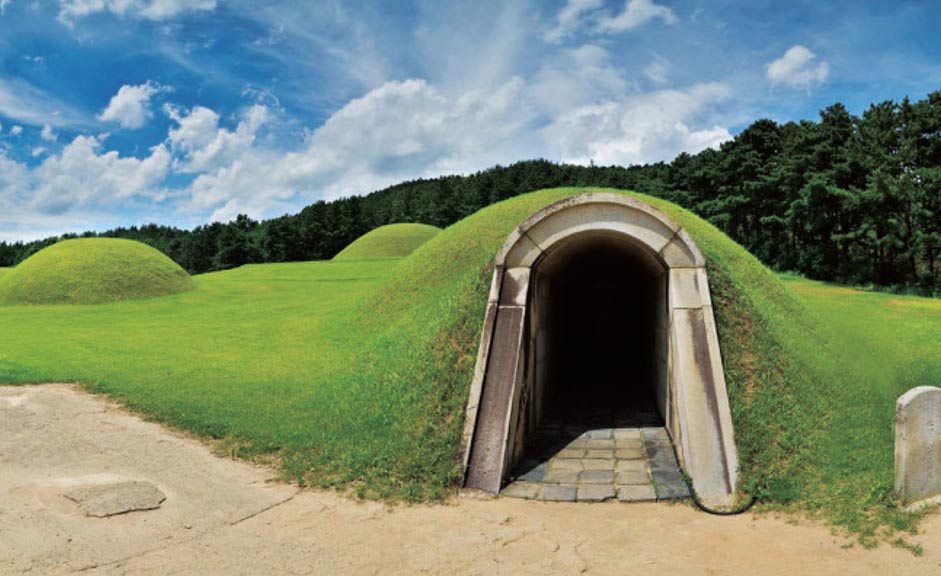The Little Known Ancient Korean Sites of the Baekje Kingdom Finally Receive Worldwide Recognition
Eight areas in Korea that used to be part of ancient Baekje Kingdom were included in the UNESCO World Heritage List in 2015. They were registered at Number 12 on the list, which covers over 1000 ancient sites across the globe. The Korean sites, known as the Baekje Historic Areas, include locations in Iksan in North Jeolla, and Gongju and Buyeo in South Chungcheong. They include royal palaces and fortresses, tombs, temples and other archaeological sites.
Introducing the Baekje Kingdom
“Together, these sites represent the later period of the Baekje Kingdom -- one of the three earliest kingdoms of the Korean peninsula, during which time they were at the crossroads of considerable technological, religious (Buddhism), cultural and artistic exchanges between the ancient East Asian kingdoms in Korea, China and Japan” said a spokesperson from UNESCO.

The Baekje kingdom at its height in 375 AD. (Wikimedia Commons).
Buddhism and Confucianism were major influences in the region and so there are many ancient temples that have to be preserved, among various other important structures.
Local authorities in the region hope that the inclusion of these sites on the UNESCO list will in turn boost tourism and revitalize the economy. The World Heritage Committee (WHC) has recommended that Korea establish management plans for the sites and monitor them regularly. This will be challenging given that the locations are spread across three different cities.

Baekje Cultural Land, Buyeo-gun, Chungcheongnam-do, South Korea. (Wikimedia Commons)
Baekje Kingdom was located in southwest Korea and existed between 18 BC and 600 AD. It was founded by Onjo, the third son of the founder of Goguryeo, Jumong. It was one of three kingdoms in the country during The Three Kingdoms Period (57 BC - 668 AD), alongside Goguryeo and Silla. The three kingdoms were often rivals in their bid to control the western Korean peninsula up to what is now Pyoungyang. It’s possible that Baekje Kingdom may have expanded its dominion into China, most probably in Liaoxi, although this idea is disputed. The kingdom also became a major maritime power in the region, establishing political and trade links with China and Japan.
Whose Royal Tomb is in Iksan?
A royal tomb located in Iksan created some debate recently regarding its owner. When Jeonju National Museum analyzed a tooth found in the tomb in 2016, they claimed it belonged to a woman who died when she was 20-40 years old. But that discovery went against the commonly held belief that the tomb was created for the 30th king of the Baekje Kingdom, King Mu.
To solve the problem, the Cultural Heritage Administration (CHA) joined forces with the Iksan city government and a local university research institute to excavate the tomb in August 2017. Months later they finally uncovered a box of human bones in a burial chamber.
A spokesperson for the Buyeo National Research Institute of Cultural Heritage said that the royal Iksan tomb probably was created for King Mu, and, “We analyzed the human bone from the royal tomb in various methods and found that they belong to a man around the age bracket of 60 years. He is believed to be 161-170.1 centimeters tall and the year of death is estimated at 620 to 659.” King Mu is the only ruler of the Baekje kingdom who possibly died in the 620-659 period.
The Stone Pagoda of Mireuk Temple
Iksan is also home to the Stone Pagoda of Mireuk Temple Site, known locally as Mireuksajiseoktap and constructed during the 7th century when the kingdom was approaching its demise. The city was once Baekje Kingdom’s capital. The Stone Pagoda is Korea’s oldest and largest, however an inspection in 1998 found that it was in poor structural condition. A decision was made to dismantle it, but it was overturned when a 19.5 billion won ($17.4 million) restoration project was decided upon instead.

The east pagoda of temple Miruksa. (Wikimedia Commons)
“There were many criticisms, but I was determined that this restoration would be a model of our stone artifact restorations” the former head of the National Research Institute of Cultural Heritage, Cho You-jeon told The Korea Herald. “The know-how that the artisans accumulated in the process is an asset that will play a big role in the restoration of other stone artifacts in the future.”
Baekje Kingdom Sites in Buyeo
Another pagoda at the Jeongnimsa Temple Site in Buyeo, is also the best preserved of all the Baekje Kingdom pagodas. It has five storeys and is the only one to remain in its original condition since the Mireuk pagoda was restored during the Japanese colonisation of 1910-45. The Mireuk temple’s original appearance is unknown.
The Neungsan-ri Ancient Tombs (or Baekje Royal Tombs) in Buyeo consists of seven huge burial chambers which may have been the last resting place for a king or other members of a royal household.
The Tomb of King Muryeong (462-523) in Gongju is one of the Songsan-ri Ancient Tombs.

The Baekje Kingdom Royal Tombs. Buyeo, South Korea. (Wikimedia Commons)
The Great Gilt-Bronze Incense Burner of Baekje
In 1993, Korean archaeologists investigating Buyeo discovered the country’s most famous relic, the Great Gilt-bronze Incense Burner of Baekje. The artifact is covered with ancient carvings depicting mountains, musicians, and animals - including a phoenix, a dragon, a tiger and a deer. It was found near the Naseong Fortress and is 64 centimetres (25 inches) high, weighing 11.8 kilograms (26 pounds).

The Gilt-bronze Incense Burner of Baekje (Wikimedia Commons)
According to Lee Ji-seong, the director of the Jeonbuk Provincial Government’s culture, sports and tourism department, the Baekje Historic Areas will be connected to other potential tourism sites located on the country’s south-eastern coast in order to form a representative history and culture site.
Featured image: Royal tombs in Neungsan-ri, Baekje Kingdom tombs. (Cultural Heritage Administration)




















Comments
I have ever heard of the Baekje Kingdom an I appreciate this article. However, I do wish references would have been included
Hi, I am Tiyo from Indonesia. This is my first comment since you have verified my account just few minutes ago. I am glad here because of my enthusiasm about world history. I must get plenty of experiences here. Thank you.
sww